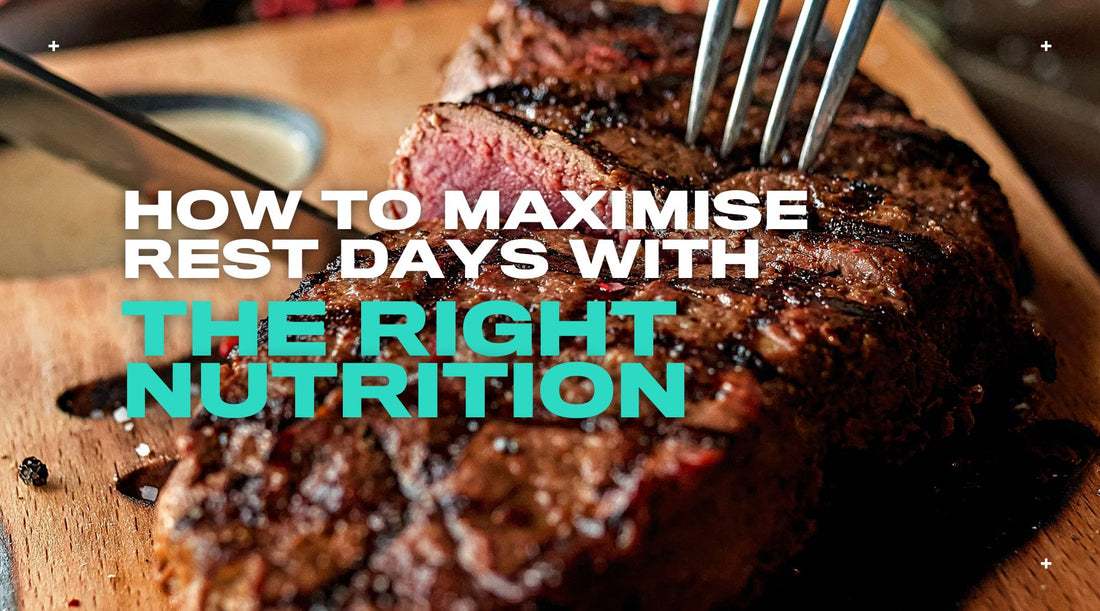
How to Maximise Rest Days with the Right Nutrition
Rest days are just as important as training days when it comes to muscle growth, recovery, and performance. While taking a break from exercise allows your body to heal, what you eat on rest days plays a critical role in repairing muscles, replenishing energy stores, and preventing unnecessary fatigue.
In this guide, we’ll break down:
✅ What to eat on a rest day for optimal recovery.
✅ Why protein remains essential—even when you’re not training.
✅ How Roam bars provide the perfect balance of high-protein nutrition for recovery.
Why Nutrition Matters on Rest Days
Your body doesn’t stop working just because you’re not training. In fact, muscle repair, glycogen replenishment, and hormone regulation occur primarily during recovery periods—making rest-day nutrition essential for:
Muscle Repair & Growth
Training causes micro-tears in muscle fibers, and protein intake is needed to rebuild them stronger.
Skipping protein on rest days can lead to muscle breakdown instead of muscle growth.
Refueling Energy Stores
Carbohydrates help replenish glycogen levels that were depleted during workouts.
Eating the right amount of carbs on rest days ensures better performance in your next workout.
Preventing Excess Fatigue & Inflammation
Rest days should reduce soreness and inflammation—but the wrong foods (processed sugars, trans fats) can make things worse.
Nutrient-dense meals with protein, healthy fats, and fiber can help your body recover more efficiently.

What to Eat on a Rest Day for Optimal Recovery
Your macronutrient intake on rest days should focus on a balanced mix of protein, healthy fats, and quality carbohydrates. Here’s how to structure your nutrition for optimal muscle recovery and energy replenishment:
Protein: Maintain Muscle Repair
Protein is essential even when you’re not training—it prevents muscle breakdown and supports continuous recovery.
Aim for 1.6–2.2g of protein per kg of body weight on rest days.
Best Protein Sources for Rest Days:
✅ Roam Grass-Fed Protein Bars (20g protein, only 120 calories)
✅ Lean meats (chicken, turkey, beef)
✅ Fatty fish (salmon, tuna)
✅ Eggs
✅ Greek yoghurt
✅ Tofu & lentils (for plant-based eaters)
💡 Why Roam? Roam bars provide a convenient, high-quality protein source with zero artificial fillers, making them perfect for post-training recovery snacks.
Carbohydrates: Replenish Glycogen for Future Workouts
Carbs are NOT the enemy on rest days. In fact, consuming moderate amounts of complex carbs helps restore muscle glycogen and prepares your body for the next workout.
Prioritise slow-digesting, fibre-rich carbohydrates for steady energy.
Best Carb Sources for Rest Days:
✅ Sweet potatoes
✅ Quinoa & brown rice
✅ Oats
✅ Whole-grain bread & pasta
✅ Fruits (bananas, berries, apples)
💡 Pro Tip: Pair Roam bars with a banana or oats for a balanced snack that fuels recovery and keeps energy steady.
Healthy Fats: Reduce Inflammation & Support Hormone Balance
Fats play a crucial role in reducing muscle soreness, promoting recovery, and supporting hormone production.
Include omega-3-rich foods to combat inflammation and improve joint health.
✅ Best Healthy Fat Sources for Rest Days:
✅ Avocados
✅ Nuts & seeds (almonds, walnuts, chia seeds)
✅ Fatty fish (salmon, sardines)
✅ Olive oil & coconut oil
💡 Pro Tip: A Roam bar + a handful of almonds make for an easy, well-rounded recovery snack that delivers protein, healthy fats, and lasting energy.
Why Protein Remains Important on Rest Days
Even though you’re not training, your body is still repairing, rebuilding, and maintaining muscle. Skipping protein on rest days can slow down recovery and lead to muscle loss over time.
Here’s why protein remains essential on your days off:
-
Prevents Muscle Breakdown
Your body continues to repair muscle fibres that were torn during workouts.
Consuming adequate protein ensures your muscles rebuild instead of breaking down.
-
Helps Reduce Muscle Soreness
Protein supports muscle recovery by reducing inflammation and soreness.
High-quality protein sources like Roam bars contain all essential amino acids needed for recovery.
-
Keeps You Full and Satisfied
Rest days often mean reduced calorie expenditure, but protein keeps you full without unnecessary snacking.
A high-protein snack like Roam can help control hunger and cravings while supporting recovery.
How to Include Roam Bars in Your Rest-Day Nutrition Plan
Roam bars are the perfect addition to your rest-day diet—offering high-quality grass-fed protein in a convenient, low-calorie snack.
🥩 As a Post-Breakfast Protein Boost
Pair a Roam bar with Greek yoghurt and berries for a protein-packed morning snack.
🥩 As a Midday Recovery Snack
Enjoy a Roam bar with a handful of almonds to stay full without feeling sluggish.
🥩 As a Pre-Bed Protein Source
Slow-digesting protein before bed can improve overnight muscle recovery.
Roam bars make for a light, high-protein late-night snack without artificial additives.
Rest Smarter with the Right Nutrition
Rest days aren’t just about taking a break from exercise—they’re about optimising recovery and preparing your body for future performance. By focusing on high-quality protein, complex carbs, and healthy fats, you can enhance muscle repair, reduce soreness, and maintain strength.
For a convenient, high-protein, clean option, Roam bars are the ultimate recovery snack. Whether you need a quick post-breakfast boost, a midday refuel, or a late-night protein fix, Roam delivers high-quality protein without the junk.
🔥 Train hard. Recover smarter.
Further Reading:
What to eat on normal training days - BBC Good Food
Rest Day Recipes by British Cycling - British Cycling
